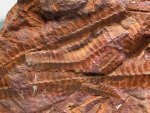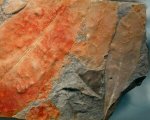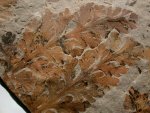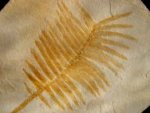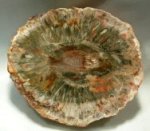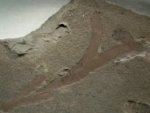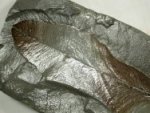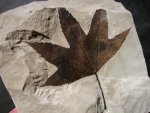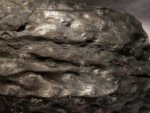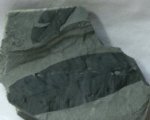Visit
these fossil dealer shops currently stocking plant fossils
for sale:
EDCOPE
Enterprises
About
Plant Fossils and Evolution of Plants
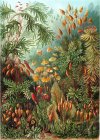
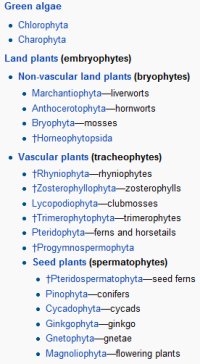 Science
places the origin of plants (Kingdom of
Life Plantae) in deep time of the precambrian with the appearance
of algae,
photosynthetic eukaryotic organisms once incorrectly grouped
with prokaryotic bacteria. Algae make their photosynthesic
living within membrane-bound organelles called chloroplasts
that contain circular DNA similar in structure to Cyanobacteria,
the likely direct outcome endosymbiosis in deep time. Based
on evidence from fossil spores, the first land plants, the
embryophytes that evolved from algae, appeared in the Ordovician
period, some 450 million years ago. These included the non
vascular plants of : 1) Division Marchantiophyta (liverworts);
2) Division Anthocerotophyta (hornworts); and 3) Division
Bryophyta (moss).
Science
places the origin of plants (Kingdom of
Life Plantae) in deep time of the precambrian with the appearance
of algae,
photosynthetic eukaryotic organisms once incorrectly grouped
with prokaryotic bacteria. Algae make their photosynthesic
living within membrane-bound organelles called chloroplasts
that contain circular DNA similar in structure to Cyanobacteria,
the likely direct outcome endosymbiosis in deep time. Based
on evidence from fossil spores, the first land plants, the
embryophytes that evolved from algae, appeared in the Ordovician
period, some 450 million years ago. These included the non
vascular plants of : 1) Division Marchantiophyta (liverworts);
2) Division Anthocerotophyta (hornworts); and 3) Division
Bryophyta (moss).
 That
plant diversification, including the evolution of vascular
tissue and water circulatory systems
(the tracheophytes or higher plants), proceeded rapidly
through the Silurian and into the early Devonian is evidenced
by
a rich floral fossil assemblage preserved with cellular
detail in the Middle Devonian Rhynie chert of Scorland. By
this
time plants had evolved most of the characteristics of
modern plants, such as roots, leaves and secondary wood.
These include
the seedless members of Divisions Rhyniophyta (rhyniophytes),
Zosterophyllophyta (zosterophylls), Lycopodiophyta (clubmosses),
Trimerophytophyta (trimerophytes), and Pteridophyta (ferns
and horsetails). Seed plants (Superdivision Spermatophytes)
had evolved by the Late Devonian, and forests comprising
large trees had appeared. The seed plants are
grouped into several divisions: 1) Cycadophyta (cycads);
2)
That
plant diversification, including the evolution of vascular
tissue and water circulatory systems
(the tracheophytes or higher plants), proceeded rapidly
through the Silurian and into the early Devonian is evidenced
by
a rich floral fossil assemblage preserved with cellular
detail in the Middle Devonian Rhynie chert of Scorland. By
this
time plants had evolved most of the characteristics of
modern plants, such as roots, leaves and secondary wood.
These include
the seedless members of Divisions Rhyniophyta (rhyniophytes),
Zosterophyllophyta (zosterophylls), Lycopodiophyta (clubmosses),
Trimerophytophyta (trimerophytes), and Pteridophyta (ferns
and horsetails). Seed plants (Superdivision Spermatophytes)
had evolved by the Late Devonian, and forests comprising
large trees had appeared. The seed plants are
grouped into several divisions: 1) Cycadophyta (cycads);
2) 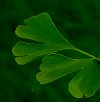 Ginkgophyta,
(the ginkgo, with one remaining "living fossil" representative);
Pinophyta (the conifers); Gnetophyta (gnetophytes), and
the flowering plants of Division Magnoliophyta. The fossil
record
has numerous extinct taxa of seed plants, among them the
seed ferns (Pteridospermae) that were enormously successful
forming vast late paleozoic forests. Glossopteris was a
prevalent tree supercontinent Gondwana during the Permian
period. Plants
largely escaped the Permian/Triassic extinction. Seed ferns
had declined in by the Triassic, with modern gymnosperm
groups were abundant and dominant through the end of the
Cretaceous,
when angiosperms radiated.
Ginkgophyta,
(the ginkgo, with one remaining "living fossil" representative);
Pinophyta (the conifers); Gnetophyta (gnetophytes), and
the flowering plants of Division Magnoliophyta. The fossil
record
has numerous extinct taxa of seed plants, among them the
seed ferns (Pteridospermae) that were enormously successful
forming vast late paleozoic forests. Glossopteris was a
prevalent tree supercontinent Gondwana during the Permian
period. Plants
largely escaped the Permian/Triassic extinction. Seed ferns
had declined in by the Triassic, with modern gymnosperm
groups were abundant and dominant through the end of the
Cretaceous,
when angiosperms radiated.
 The
flowering plants (angiosperms), also known
as Angiospermae or Magnoliophyta, are the most
diverse group of extant land plants. When flowing evolved
remains unsettled since the fossil record is inconclusive,
but there is conjecture that the ancestors of the angiosperms
diverged from an unknown group of gymnosperms during
the late Triassic, more than 200 million years ago. The earliest
known fossil evidence is pollen dated to 130 million
years
ago. The Jurassic plant Schmeissneria, traditionally
considered a type of ginkgo, may be the earliest known angiosperm.
Regardless,
they rapidly radiated from the lower Cretaceous, becomming
the dominant trees. The grasses and numerous other taxa
evolved in the tertiary with new metabolic mechanisms as
adatations to the prevailing dryer
environments with lower carbon dioxide.
The
flowering plants (angiosperms), also known
as Angiospermae or Magnoliophyta, are the most
diverse group of extant land plants. When flowing evolved
remains unsettled since the fossil record is inconclusive,
but there is conjecture that the ancestors of the angiosperms
diverged from an unknown group of gymnosperms during
the late Triassic, more than 200 million years ago. The earliest
known fossil evidence is pollen dated to 130 million
years
ago. The Jurassic plant Schmeissneria, traditionally
considered a type of ginkgo, may be the earliest known angiosperm.
Regardless,
they rapidly radiated from the lower Cretaceous, becomming
the dominant trees. The grasses and numerous other taxa
evolved in the tertiary with new metabolic mechanisms as
adatations to the prevailing dryer
environments with lower carbon dioxide.


 Science
places the origin of plants (Kingdom of
Life Plantae) in deep time of the precambrian with the appearance
of algae,
photosynthetic eukaryotic organisms once incorrectly grouped
with prokaryotic bacteria. Algae make their photosynthesic
living within membrane-bound organelles called chloroplasts
that contain circular DNA similar in structure to Cyanobacteria,
the likely direct outcome endosymbiosis in deep time. Based
on evidence from fossil spores, the first land plants, the
embryophytes that evolved from algae, appeared in the Ordovician
period, some 450 million years ago. These included the non
vascular plants of : 1) Division Marchantiophyta (liverworts);
2) Division Anthocerotophyta (hornworts); and 3) Division
Bryophyta (moss).
Science
places the origin of plants (Kingdom of
Life Plantae) in deep time of the precambrian with the appearance
of algae,
photosynthetic eukaryotic organisms once incorrectly grouped
with prokaryotic bacteria. Algae make their photosynthesic
living within membrane-bound organelles called chloroplasts
that contain circular DNA similar in structure to Cyanobacteria,
the likely direct outcome endosymbiosis in deep time. Based
on evidence from fossil spores, the first land plants, the
embryophytes that evolved from algae, appeared in the Ordovician
period, some 450 million years ago. These included the non
vascular plants of : 1) Division Marchantiophyta (liverworts);
2) Division Anthocerotophyta (hornworts); and 3) Division
Bryophyta (moss).  That
plant diversification, including the evolution of vascular
tissue and water circulatory systems
(the tracheophytes or higher plants), proceeded rapidly
through the Silurian and into the early Devonian is evidenced
by
a rich floral fossil assemblage preserved with cellular
detail in the Middle Devonian Rhynie chert of Scorland. By
this
time plants had evolved most of the characteristics of
modern plants, such as roots, leaves and secondary wood.
These include
the seedless members of Divisions Rhyniophyta (rhyniophytes),
Zosterophyllophyta (zosterophylls), Lycopodiophyta (clubmosses),
Trimerophytophyta (trimerophytes), and Pteridophyta (ferns
and horsetails). Seed plants (Superdivision Spermatophytes)
had evolved by the Late Devonian, and forests comprising
large trees had appeared. The seed plants are
grouped into several divisions: 1) Cycadophyta (cycads);
2)
That
plant diversification, including the evolution of vascular
tissue and water circulatory systems
(the tracheophytes or higher plants), proceeded rapidly
through the Silurian and into the early Devonian is evidenced
by
a rich floral fossil assemblage preserved with cellular
detail in the Middle Devonian Rhynie chert of Scorland. By
this
time plants had evolved most of the characteristics of
modern plants, such as roots, leaves and secondary wood.
These include
the seedless members of Divisions Rhyniophyta (rhyniophytes),
Zosterophyllophyta (zosterophylls), Lycopodiophyta (clubmosses),
Trimerophytophyta (trimerophytes), and Pteridophyta (ferns
and horsetails). Seed plants (Superdivision Spermatophytes)
had evolved by the Late Devonian, and forests comprising
large trees had appeared. The seed plants are
grouped into several divisions: 1) Cycadophyta (cycads);
2)  Ginkgophyta,
(the ginkgo, with one remaining "living fossil" representative);
Pinophyta (the conifers); Gnetophyta (gnetophytes), and
the flowering plants of Division Magnoliophyta. The fossil
record
has numerous extinct taxa of seed plants, among them the
seed ferns (Pteridospermae) that were enormously successful
forming vast late paleozoic forests. Glossopteris was a
prevalent tree supercontinent Gondwana during the Permian
period. Plants
largely escaped the Permian/Triassic extinction. Seed ferns
had declined in by the Triassic, with modern gymnosperm
groups were abundant and dominant through the end of the
Cretaceous,
when angiosperms radiated.
Ginkgophyta,
(the ginkgo, with one remaining "living fossil" representative);
Pinophyta (the conifers); Gnetophyta (gnetophytes), and
the flowering plants of Division Magnoliophyta. The fossil
record
has numerous extinct taxa of seed plants, among them the
seed ferns (Pteridospermae) that were enormously successful
forming vast late paleozoic forests. Glossopteris was a
prevalent tree supercontinent Gondwana during the Permian
period. Plants
largely escaped the Permian/Triassic extinction. Seed ferns
had declined in by the Triassic, with modern gymnosperm
groups were abundant and dominant through the end of the
Cretaceous,
when angiosperms radiated.  The
flowering plants (angiosperms), also known
as Angiospermae or Magnoliophyta, are the most
diverse group of extant land plants. When flowing evolved
remains unsettled since the fossil record is inconclusive,
but there is conjecture that the ancestors of the angiosperms
diverged from an unknown group of gymnosperms during
the late Triassic, more than 200 million years ago. The earliest
known fossil evidence is pollen dated to 130 million
years
ago. The Jurassic plant Schmeissneria, traditionally
considered a type of ginkgo, may be the earliest known angiosperm.
Regardless,
they rapidly radiated from the lower Cretaceous, becomming
the dominant trees. The grasses and numerous other taxa
evolved in the tertiary with new metabolic mechanisms as
adatations to the prevailing dryer
environments with lower carbon dioxide.
The
flowering plants (angiosperms), also known
as Angiospermae or Magnoliophyta, are the most
diverse group of extant land plants. When flowing evolved
remains unsettled since the fossil record is inconclusive,
but there is conjecture that the ancestors of the angiosperms
diverged from an unknown group of gymnosperms during
the late Triassic, more than 200 million years ago. The earliest
known fossil evidence is pollen dated to 130 million
years
ago. The Jurassic plant Schmeissneria, traditionally
considered a type of ginkgo, may be the earliest known angiosperm.
Regardless,
they rapidly radiated from the lower Cretaceous, becomming
the dominant trees. The grasses and numerous other taxa
evolved in the tertiary with new metabolic mechanisms as
adatations to the prevailing dryer
environments with lower carbon dioxide.